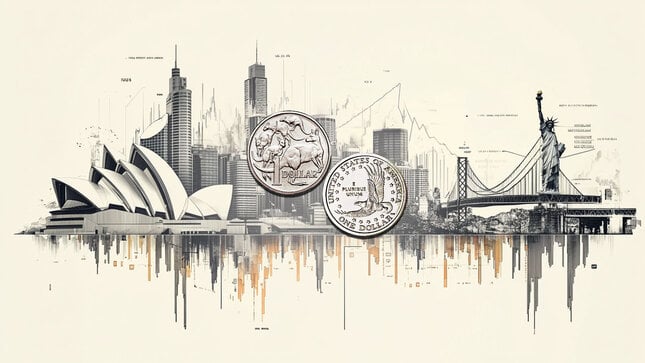As Tuesday dawns across Asia, investors are stepping in lively, buoyed by a global stock surge and an uptick in risk appetite from the US session. Yet, there's a palpable tension in the air as President-elect Donald Trump's ever-volatile social media musings and a robust U.S. dollar threaten to snuff out the budding optimism.
Adding to the regional apprehension is the precarious state of China's economy. Although recent purchasing managers' index data revealed that November saw the fastest expansion in factory activity in months—likely boosted by exporters rushing to get ahead of Trump's anticipated tariff storm—the broader economic outlook remains fraught with uncertainty.
This complex tapestry of market dynamics—China's manufacturing uptick, the deepening economic concerns, and the dollar's assertive rally—are all intricately linked to Trump’s aggressive trade posturing. His vows of imposing hefty tariffs as soon as he enters the Oval Office next month cast long shadows over the Asian markets, making investors both wary and watchful.
China's bond yields have hit a staggering new low, signalling a chilling risk forecast as the giant struggles against a deflationary spiral eerily reminiscent of Japan's long economic malaise. The spectre of Donald Trump's return adds a layer of unpredictability, with his trade policy bravado poised to deepen China’s economic quagmire.
As yields nosedive, market whispers grow louder, anticipating further monetary loosening from the People's Bank of China (PBoC). Despite a slew of rate cuts and easing measures, the central bank's toolkit has yet to spark a robust revival, leaving traders betting on even more aggressive steps ahead, possibly slashing the Reserve Requirement Ratio (RRR) or tweaking repo and lending rates. In a striking echo of early pandemic days, one-year swaps have bottomed out at 1.53% as of Monday, reflecting acute market expectations for more drastic PBoC action.
This financial conundrum has spurred a rally in Chinese bonds. Easier monetary policy inadvertently feeds frenzied leveraged bond bets, potentially inflating a perilous bubble. The PBoC finds itself in a high-stakes juggling act, periodically stabilizing yields and warding off speculative frenzies.
Adding to the drama, the stark contrast in interest rates between China and the U.S. puts additional pressure on the yuan, which slumped to its weakest point since last July. The backdrop of Trump’s hard-charging fiscal and trade policies threatens to magnify these dynamics, undermining China's attempts to stabilize its currency amidst global trade skirmishes. But, of course, speculation is rife that they will let the Yuan float to a degree.
In the arena of international finance, Trump's economic nationalism crafts a dizzying loop of policy impacts. His tariff gambits and domestic priorities whip up storms across currency markets, leaving global financial strategies hanging in the balance.
SPI Asset Management provides forex, commodities, and global indices analysis, in a timely and accurate fashion on major economic trends, technical analysis, and worldwide events that impact different asset classes and investors.
Our publications are for general information purposes only. It is not investment advice or a solicitation to buy or sell securities.
Opinions are the authors — not necessarily SPI Asset Management its officers or directors. Leveraged trading is high risk and not suitable for all. Losses can exceed investments.
Recommended Content
Editors’ Picks

AUD/USD recovers to near 0.6300 as US Dollar retreats
AUD/USD has trimmed losses to trade near 0.6300 in Thursday's Asian session. The US Dollar sees a sharp pullback from three-week highs after US President Trump announced some tariff exemptions on auto part imports, supporting the pair. However, buyers remain caution amid fears of global trade war escalation.

USD/JPY drops to test 150.00, tracks US Dollar pull
USD/JPY is dropping to test 150.00 in the Asian session on Thursday. The pair meets fresh supply in tandem with the US Dollar on US President Trump's latest tariff exemption announcement. Further, hawkish BoJ bets and the risk-off impulse also underpin the safe-haven Japanese Yen, aiding the latest leg down

Gold price sticks to positive bias above $3,000 on safe-haven demand
Gold price ticks higher in the Asian session on Thursday as worries about Trump's tariff plans continue to benefit the safe-haven bullion. This combined with a fresh US Dollar selliing from a three-week high add to Gold price upside. Traders now look to tariff updates and Friday's US PCE data for further impetus.

Stablecoin mania kicks off as Wyoming and Fidelity join the race
According to Governor Mark Gordon, the state of Wyoming has joined the race for a stablecoin, following plans to launch WYST, a US Dollar-backed token in July. WYST will be fully backed by US Treasuries, cash, and repurchase agreements, with a capitalization requirement of at least 102%.

Sticky UK services inflation shows signs of tax hike impact
There are tentative signs that the forthcoming rise in employer National Insurance is having an impact on service sector inflation, which came in a tad higher than expected in February. It should still fall back in the second quarter, though, keeping the Bank of England on track for three further rate cuts this year.

The Best brokers to trade EUR/USD
SPONSORED Discover the top brokers for trading EUR/USD in 2025. Our list features brokers with competitive spreads, fast execution, and powerful platforms. Whether you're a beginner or an expert, find the right partner to navigate the dynamic Forex market.